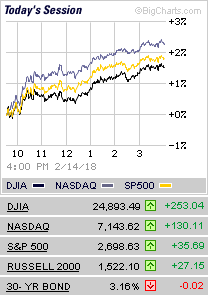Everyone knows that minimizing taxes during your earning years is important—that’s a big reason Americans have invested trillions of dollars in 401(k)’s and other tax-advantaged retirement accounts.
But after you retire, managing your taxes becomes even more important. That’s because you’re probably not going to go back to work to replace income that’s lost to the IRS. For this reason, it’s important to understand what’s known as retirement withdrawal sequencing.
This wonky sounding term simply refers to the order in which you take money from different types of retirement accounts after you retire. Many of us have some combination of taxable, tax-deferred, and tax-free accounts. By tapping certain accounts first while your money grows in others, you can save taxes and continue to build your assets.
Here’s a quick review of retirement-savings vehicles:
- Tax-deferred: These include 401(k)’s and traditional IRAs. Money contributed to them is deducted from your taxable income, but both principal and earnings are taxed when you eventually withdraw the money.
- Tax-free: Roth IRAs, Roth 401(k)’s and similar plans are funded with after-tax money, meaning contributions aren’t deducted from your taxable income. The good news is that the principal and earnings grow and are withdrawn tax-free.
- Taxable: Investors often use taxable brokerage accounts after maxing out their tax-advantaged accounts. Taxable accounts are funded with after-tax dollars and they accrue taxes on gains, interest, and dividends.
In general, the withdrawal-sequencing playbook dictates that retirees should first take their required minimum distributions (RMDs) from their traditional 401(k) or IRA. Not doing so is extremely costly, as it results in penalties equal to half of the required withdrawal.
After that, many retirees should withdraw money from taxable accounts, followed by tax-deferred accounts, and finally tax-free accounts. Here’s the logic: Long-term gains and qualified dividends in taxable accounts are subject to a relatively low rate that tops out at 20%. Taxes on traditional 401(k)’s and IRAs are much higher. They’re taxed as ordinary income, with rates as high as 39.6%.
By leaving the higher-tax accounts untouched as long as possible, you defer taxes while potentially continuing to grow your money. Assets in tax-free Roth plans are usually withdrawn last. Since they’re tax-free and aren’t subject to RMDs, it’s wise to let that money grow.
Keep in mind most of these rules are not set in stone. Individuals’ situations do differ. When assets include real estate, annuities, and other vehicles, more customization is required. And remember that a person’s tax situation can change along with factors like their expenses and the deductions they have available in a given year. But it’s also important to make sure that withdrawals don’t push you into a higher tax bracket.
Unfortunately, the tax bills don’t stop coming once you retire. But with smart withdrawal planning, you can pay as little tax as possible while growing your assets to their full potential. Please contact us at 888.473.6931 if you’d like to learn more.

